PUBLICATIONS
THE FIFA CLEARING HOUSE: REGULATORY CHALLENGES AND ITS FUTURE
by Salvatore Civale, Roberto Terenzio and Anshul Ramesh
 Attorney-at-law, name Partner of the boutique law firm Studio Civale, founding member and President of the Italian Sports Lawyers Association (AIAS). He is selected pro bono lawyer at FIFA and UEFA Legal Aid project and Arbitrator at ECA - European Handball Federation Court of Arbitration (Wien, Austria). He is appointed arbitrator in the Arbitration Panels of Italian Serie A League established by the Italian football FA (FIGC), player’s union (AIC) and the league (LNPA). He is Vice Director and member of the Editorial Board of the Italian Review of Sport Law and Economy (RDES) and author of various publications, book chapters and articles on sports law.
Attorney-at-law, name Partner of the boutique law firm Studio Civale, founding member and President of the Italian Sports Lawyers Association (AIAS). He is selected pro bono lawyer at FIFA and UEFA Legal Aid project and Arbitrator at ECA - European Handball Federation Court of Arbitration (Wien, Austria). He is appointed arbitrator in the Arbitration Panels of Italian Serie A League established by the Italian football FA (FIGC), player’s union (AIC) and the league (LNPA). He is Vice Director and member of the Editorial Board of the Italian Review of Sport Law and Economy (RDES) and author of various publications, book chapters and articles on sports law.
He is also a lecturer on sports law in many forums, including congresses, universities and seminars.
 Sports lawyer, member of the Legal Affairs Commission AIA-FIGC, Member of the Arbitrators List of the Economic Disputes Commission of the Italian Basketball Federation (FIP). Author of publications, book chapters and articles on sports law.
Sports lawyer, member of the Legal Affairs Commission AIA-FIGC, Member of the Arbitrators List of the Economic Disputes Commission of the Italian Basketball Federation (FIP). Author of publications, book chapters and articles on sports law.
 Sports lawyer, Associate at Coccia De Angelis y Associati (CDAA) in Rome.
Sports lawyer, Associate at Coccia De Angelis y Associati (CDAA) in Rome.
Abstract
The purpose of this article is to enumerate the working of the FIFA Clearing House, after almost two years of operations, and explain its nature, scope and purpose along with the issues highlighted by the Court of Arbitration for Sport in various recent awards. For the sake of clarity, this article is intended to highlight the current regulatory framework, and consequently, it will not elaborate on training compensation and solidarity mechanism itself, the past history or practice of its distribution and related issues or jurisprudence.
The article begins with an introduction to the FIFA Clearing House, and it attempts to explain the functioning of the latter and elaborate on all involved procedures. Finally, the authors attempt to dissect and critically analyse the relevant jurisprudence concerning the FIFA Clearing House and provide their key conclusions therefrom.
Keywords
FIFA Clearing House – Training rewards – Procedure – Compliance – TMS – Waiver of claim for training compensation – De novo power
Table of Content - Sommario
THE EVOLUTION OF FIFA TRANSFER FOOTBALL
REGULATIONS:
CHALLENGES, OPPORTUNITIES, AND
INNOVATIVE APPROACHES
IN THE WAKE OF THE DIARRA JUDGMENT
by Stefano Bastianon and Michele Colucci
 Full Professor of European Union Law at the University of Bergamo
(Italy), CAS Arbitrator and member of the “Collegio di Garanzia dello Sport del CONI” (Italian
highest Sports Court of the Italian Olympic Committee). He is an Attorney-at-law and co-founder
of the Law Firm Bastianon-Garavaglia in Busto Arsizio (Italy). He is a member of the Steering
Committee of the Rivista di Diritto Sportivo and the Scientific Committee of the Rivista di Diritto
ed Economia dello Sport.
Full Professor of European Union Law at the University of Bergamo
(Italy), CAS Arbitrator and member of the “Collegio di Garanzia dello Sport del CONI” (Italian
highest Sports Court of the Italian Olympic Committee). He is an Attorney-at-law and co-founder
of the Law Firm Bastianon-Garavaglia in Busto Arsizio (Italy). He is a member of the Steering
Committee of the Rivista di Diritto Sportivo and the Scientific Committee of the Rivista di Diritto
ed Economia dello Sport.
 Civil servant of the European Commission in Brussels, member of the
Dispute Resolution Chamber of the FIFA Football Tribunal and President of the Council of the
European Court of Arbitration of the European Handball Federation. He is the co-founder and
honorary President of the Italian Association of Sports Lawyers (AIAS), editor of the International
Encyclopaedia of Sports Law and Scientific Director of the Rivista di Diritto ed Economia
dello Sport.
Civil servant of the European Commission in Brussels, member of the
Dispute Resolution Chamber of the FIFA Football Tribunal and President of the Council of the
European Court of Arbitration of the European Handball Federation. He is the co-founder and
honorary President of the Italian Association of Sports Lawyers (AIAS), editor of the International
Encyclopaedia of Sports Law and Scientific Director of the Rivista di Diritto ed Economia
dello Sport.
Abstract
The authors analyze the legal issues and challenges the current FIFA
transfer regulations must cope with in complying with the Diarra ruling by the European
Court of Justice. They consider the ratione loci and temporis impact of the ruling on
football. Furthermore, they explore potential outcomes in the short, medium, and long
term, highlighting how the judgment could serve as an opportunity for the evolution of
the FIFA transfer system. In this context, they offer possible solutions and alternative
measures to align the FIFA rules with the goals of world football governing body, ensuring
full compliance with the EU fundamental principles of freedom of movement and freedom
of competition.
Gli autori analizzano le questioni legali sollevate dalla recente giurisprudenza
Diarra della Corte di Giustizia dell’Unione europea e le sfide che la FIFA dovrà affrontare
nel conformarsi a tale giurisprudenza. Essi considerano l’ambito di applicazione della
sentenza ratione loci e ratione temporis. Inoltre, esplorano il potenziale impatto nel
breve, medio e lungo termine, evidenziando come la sentenza possa rappresentare
un’opportunità per l’evoluzione del sistema di trasferimenti FIFA. In questo contesto,
gli autori offrono possibili soluzioni e misure alternative per allineare le regole FIFA
con i suoi obiettivi nel pieno rispetto dei principi fondamentali dell’Unione europea in
materia di libera circolazione e di libera concorrenza.
Keywords
Transfer Rules – Joint liability – International Transfer Certificate –
Freedom of Movement – Freedom of Competition – Sporting Sanctions –
Proportionality.
Regole sui Trasferimenti – Responsabilità Solidale – Certificato di
Trasferimento Internazionale – Libertà di Circolazione – Libertà di
Concorrenza – Sanzioni Sportive – Proporzionalità.
Open access
BEYOND THE FIFA REGULATIONS, BUT THROUGH THE FIFA REGULATIONS:
THE POWERS OF FIFA JUDGES AND CAS ARBITRATORS
by Josep Francesc Vandellós Alamilla
 Attorney-at-law admitted to the Barcelona Bar Association (Spain) and founding partner of UNO ONE LEGAL PARTNERS SLP, law firm based in Valencia (Spain). Law degree from Universitat Pompeu Fabra (Barcelona), a master’s in international business and EU Community Law from Universite de Paris I (Sorbonne), a Postgraduate degree in Andorran law from Universitat d’Andorra and a degree in Advanced Taxation from Instituto de Empresa (Madrid). He sits as a member of the Evaluation Committee of LaLiga and is a Judge to the FIA Cost Cap Adjudication Panel (Formula 1 and Formula E).
Attorney-at-law admitted to the Barcelona Bar Association (Spain) and founding partner of UNO ONE LEGAL PARTNERS SLP, law firm based in Valencia (Spain). Law degree from Universitat Pompeu Fabra (Barcelona), a master’s in international business and EU Community Law from Universite de Paris I (Sorbonne), a Postgraduate degree in Andorran law from Universitat d’Andorra and a degree in Advanced Taxation from Instituto de Empresa (Madrid). He sits as a member of the Evaluation Committee of LaLiga and is a Judge to the FIA Cost Cap Adjudication Panel (Formula 1 and Formula E).
Abstract
Art. 1 of the Swiss Civil Code empowers FIFA judges and CAS arbitrators to go beyond the literal text of regulations, allowing them to adapt, extend, and integrate provisions to address gaps and ambiguities in an ever-evolving legal landscape. This provision is a powerful and transformative tool that acknowledges the inherent limitations of written law, emphasizing the dynamic relationship between legal texts and reality, facilitated through interpretation and gap-filling. This paper seeks to demonstrate that, in applying general rules to specific cases, judges and arbitrators inevitably shape the law by bridging written and unwritten norms beyond the text. It further examines how this process of integrating norms outside the text can be effectively executed while preserving the principle of legal certainty.
L'art. 1 del Codice civile svizzero autorizza i giudici FIFA e gli arbitri CAS ad andare oltre il testo letterale dei regolamenti, consentendo loro di adattare, estendere e integrare le disposizioni per colmare le lacune e le ambiguità in un panorama giuridico in continua evoluzione. Questa disposizione è uno strumento potente e trasformativo che riconosce i limiti intrinseci della legge scritta, enfatizzando il rapporto dinamico tra i testi legali e la realtà, facilitato dall’interpretazione e dal riempimento delle lacune. Il presente lavoro cerca di dimostrare che, nell’applicare le norme generali a casi specifici, i giudici e gli arbitri modellano inevitabilmente il diritto creando un ponte tra norme scritte e non scritte al di là del testo. Esamina inoltre come questo processo di integrazione delle norme al di fuori del testo possa essere efficacemente eseguito preservando il principio della certezza del diritto.
Keywords
Sports regulations – Gap – Literal interpretation – Integration of rules – Spirit of the law.
Regolamenti sportivi – Lacuna – Interpretazione letterale – Integrazione delle norme – Spirito normativo.
Open access

V ED.
4 OCTOBER 2024

SLPC 2024
ISBN 978-88-943373-7-2
FLYER
TEASER
ORDER FORM
International Sports Law and Policy Bulletin 1/2024
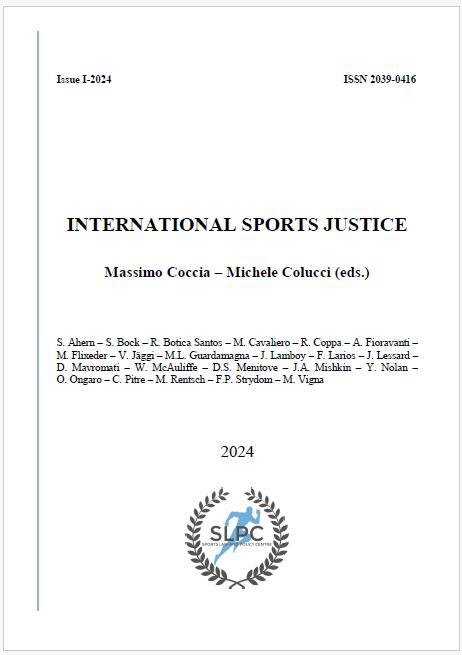
ISBN 978-88-943373-4-1
January 2024, 860 pages
-
FLYER
-
ORDER FORM

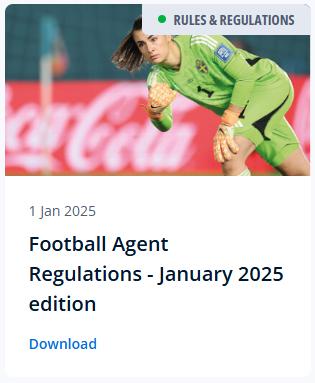
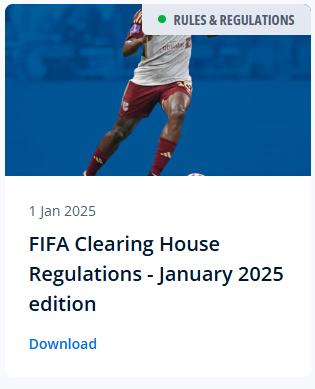
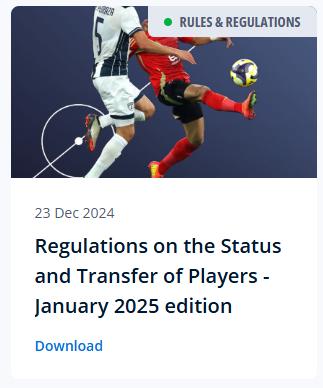
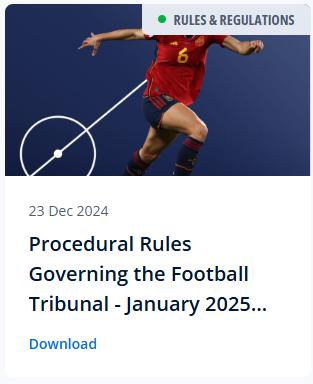
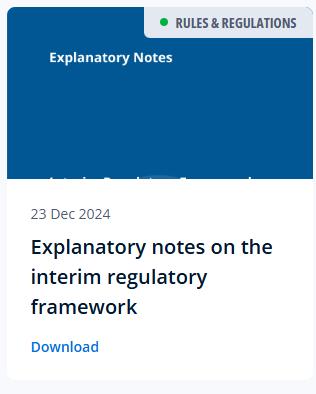

 Attorney-at-law, name Partner of the boutique law firm Studio Civale, founding member and President of the Italian Sports Lawyers Association (AIAS). He is selected pro bono lawyer at FIFA and UEFA Legal Aid project and Arbitrator at ECA - European Handball Federation Court of Arbitration (Wien, Austria). He is appointed arbitrator in the Arbitration Panels of Italian Serie A League established by the Italian football FA (FIGC), player’s union (AIC) and the league (LNPA). He is Vice Director and member of the Editorial Board of the Italian Review of Sport Law and Economy (RDES) and author of various publications, book chapters and articles on sports law.
Attorney-at-law, name Partner of the boutique law firm Studio Civale, founding member and President of the Italian Sports Lawyers Association (AIAS). He is selected pro bono lawyer at FIFA and UEFA Legal Aid project and Arbitrator at ECA - European Handball Federation Court of Arbitration (Wien, Austria). He is appointed arbitrator in the Arbitration Panels of Italian Serie A League established by the Italian football FA (FIGC), player’s union (AIC) and the league (LNPA). He is Vice Director and member of the Editorial Board of the Italian Review of Sport Law and Economy (RDES) and author of various publications, book chapters and articles on sports law.
 Sports lawyer, member of the Legal Affairs Commission AIA-FIGC, Member of the Arbitrators List of the Economic Disputes Commission of the Italian Basketball Federation (FIP). Author of publications, book chapters and articles on sports law.
Sports lawyer, member of the Legal Affairs Commission AIA-FIGC, Member of the Arbitrators List of the Economic Disputes Commission of the Italian Basketball Federation (FIP). Author of publications, book chapters and articles on sports law.
 Sports lawyer, Associate at Coccia De Angelis y Associati (CDAA) in Rome.
Sports lawyer, Associate at Coccia De Angelis y Associati (CDAA) in Rome.
 Full Professor of European Union Law at the University of Bergamo
(Italy), CAS Arbitrator and member of the “Collegio di Garanzia dello Sport del CONI” (Italian
highest Sports Court of the Italian Olympic Committee). He is an Attorney-at-law and co-founder
of the Law Firm Bastianon-Garavaglia in Busto Arsizio (Italy). He is a member of the Steering
Committee of the Rivista di Diritto Sportivo and the Scientific Committee of the Rivista di Diritto
ed Economia dello Sport.
Full Professor of European Union Law at the University of Bergamo
(Italy), CAS Arbitrator and member of the “Collegio di Garanzia dello Sport del CONI” (Italian
highest Sports Court of the Italian Olympic Committee). He is an Attorney-at-law and co-founder
of the Law Firm Bastianon-Garavaglia in Busto Arsizio (Italy). He is a member of the Steering
Committee of the Rivista di Diritto Sportivo and the Scientific Committee of the Rivista di Diritto
ed Economia dello Sport.
 Civil servant of the European Commission in Brussels, member of the
Dispute Resolution Chamber of the FIFA Football Tribunal and President of the Council of the
European Court of Arbitration of the European Handball Federation. He is the co-founder and
honorary President of the Italian Association of Sports Lawyers (AIAS), editor of the International
Encyclopaedia of Sports Law and Scientific Director of the Rivista di Diritto ed Economia
dello Sport.
Civil servant of the European Commission in Brussels, member of the
Dispute Resolution Chamber of the FIFA Football Tribunal and President of the Council of the
European Court of Arbitration of the European Handball Federation. He is the co-founder and
honorary President of the Italian Association of Sports Lawyers (AIAS), editor of the International
Encyclopaedia of Sports Law and Scientific Director of the Rivista di Diritto ed Economia
dello Sport.
 Attorney-at-law admitted to the Barcelona Bar Association (Spain) and founding partner of UNO ONE LEGAL PARTNERS SLP, law firm based in Valencia (Spain). Law degree from Universitat Pompeu Fabra (Barcelona), a master’s in international business and EU Community Law from Universite de Paris I (Sorbonne), a Postgraduate degree in Andorran law from Universitat d’Andorra and a degree in Advanced Taxation from Instituto de Empresa (Madrid). He sits as a member of the Evaluation Committee of LaLiga and is a Judge to the FIA Cost Cap Adjudication Panel (Formula 1 and Formula E).
Attorney-at-law admitted to the Barcelona Bar Association (Spain) and founding partner of UNO ONE LEGAL PARTNERS SLP, law firm based in Valencia (Spain). Law degree from Universitat Pompeu Fabra (Barcelona), a master’s in international business and EU Community Law from Universite de Paris I (Sorbonne), a Postgraduate degree in Andorran law from Universitat d’Andorra and a degree in Advanced Taxation from Instituto de Empresa (Madrid). He sits as a member of the Evaluation Committee of LaLiga and is a Judge to the FIA Cost Cap Adjudication Panel (Formula 1 and Formula E).



